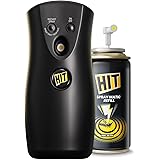The mechanism used by the body as protection against environmental agents that foreign to the body. Immunity is a state of protection against foreign pathogens or substances (antigens).
It responds to threats on an individual basis.
Term immunity derived from – Immunis, meaning Exempt.
Immune system is remarkably versatile defense system that has evolved to protect animals from invading pathogenic microorganisms and cancer.
Types of Immunity:
- Innate immunity: primitive immune system which is less specific
- Adaptive immunity: highly evolved system of specific response
Innate Immunity
- Also called Native
- Resistance possessed by an individual by birth i.e., inherited
- Provides first line of defense against infections
- Genetically determined: no prior exposure or antibody production involed
- 3 levels:
Species immunity: entire human species is resistance to plant pathogen.
Racial immunity: particular races of that species are resistant. Example: Negroid species in USA is more prone to TB than causcian species.
Individual immunity: evident on twin – smiliar degree of resistance to TB or leprosy.
- They are always present and available at short notice to protect the individual from challenges by foreign invaders
- Elements of innate immune system includes body surfaces and internal components, such as: skin, the mucous membrane, cough reflex.
- It is carried out by non-specific physical and chemical barriers (eg-skin), cellular barriers (eg-phagocytes) and molecular pattern based reactions (eg-toll like receptors or TLRs).
- It is line of defense:
First line of defense: intact skin and mucosae prevent entry of microorganism
Second line of defense: antimicrobial proteins, phagocytes and other cells.
- Factors influencing the level of innate immunity:
- Age
- Very old or very young, more susceptible to infectious disease.
- In foetus, immune system is immature where as in old age there is gradual decrease in immune system
- Hormones
- Endocrine disorders such as Diabetes mellitus, Hypothyroidism, and Adrenal dysfunctions
- Staphylococcal sepsis is more common in Diabetes, which may be caused by increased level of carbohydrates in tissues.
- Nutrition
- Immune system is reduced in malnutrition patients
- In Kwashiorker ( serve protein deficiency system), cell mediated system reduces.
Acquired or adaptive Immunity
- The resistance that human acquires during life
- Provides second line of defence
- Produces by prior exposure or antibody production
- Characteristics:
Antigen specificity: immune system or antibiotics can distinguish among antigens, even between 2 proteins that differ in only 1 amino acid.
Diversity: immune system is capable of generating large antibody diversity in its recognition molecules.
Immunologic memory: immune system exhibits memory on second encounter of same antigen by generating a second response which is more specific and quick.
Self and non self recognition: does not react with body’s own molecule but effectively eliminates foreign antigens.
- Types:
Active: natural active immunity and artificial active immunity
Passive: natural passive immunity and artificial passive immunity
Active immunity
- also called acquired immunity
- Resistance developed by an individual as a result of an antigenic stimulus.
- Used for prophylaxis to increase body resistance.
- Produced by antibodies that develop in response to antigens (Immune response)
- Latent period: requires time for its activation.
- Negative phase: a time period in which there is reduced measurable immunity – antigen combines with the pre-existing antibody and lower its circulation.
- More effective and better protection than passive.
Types:
Natural active immunity:
- Clinical infection by a microbe
- Develops after exposure to antigens in environment
- Long lasting immunity but varies on type of pathogens
- Large majority of adult – active immunity against Poliovirus
- Life long immunity – viral diseases like Chicken pox or Measles
- Premuntion: immunity to re-infection last long till the disease remains active.
- Example: Typhoid.
Artificial active immunity:
- Resistance reduced by vaccines
- May be either bacterial or viral vaccines
- Develops after administration of antigen to prevent disease
- Booster dose: repeated dose of vaccines following the primary vaccination prolong the immunity
- May be either in form of:
- Live immunity: initiates the infection without causing any injury and disease. It parallels with natural but of low grade. Example: BCG for tuberculosis.
- Killed vaccines: comparatively less immunogenic. Protection lasts only for a short period. Have to be supplemented by booster dose repeatedly. May be given orally. Example: Cholera vaccine.
- Bacterial products: example: Tetanus toxoids.
Passive Immunity
- Resistance transmitted passively to a receipent in a readymade form
- Produced by transfer of antibodies from another person
- Receipents immune system plays no active role
- Used for the treatment of acute infection
Types:
Natural passive immunity:
- Conferred by transfer of maternal antibodies across placenta or in breast milk
- Resistance passively transferred from mother to foetus or infants, through placenta and through milk (colostrums – IgA antibodies)
- Human fetus – ability to synthesize IgM from 20th week of life
- Transport of antibodies across the placenta is an active process – concentration in fetal blood is higher than in mother blood.
Artificial passive immunity:
- Resistance passively transferred to a recipient by administration of antibodies.
- Conferred by administration of antibodies to combat infection
- Agents used: hyperimmune sera of animal, covalescent sera, pooled human gamma globulin
- These are used for psophylaxis and therapy.


















